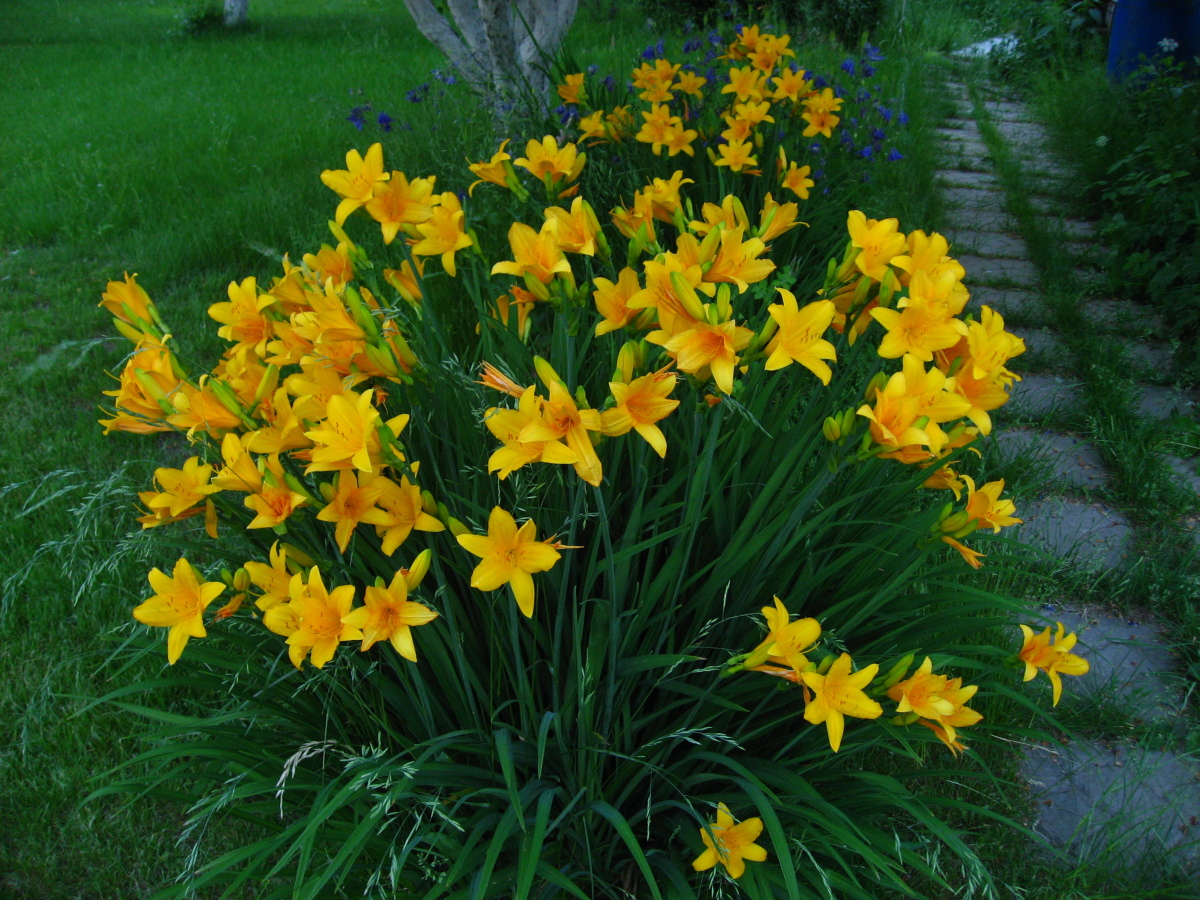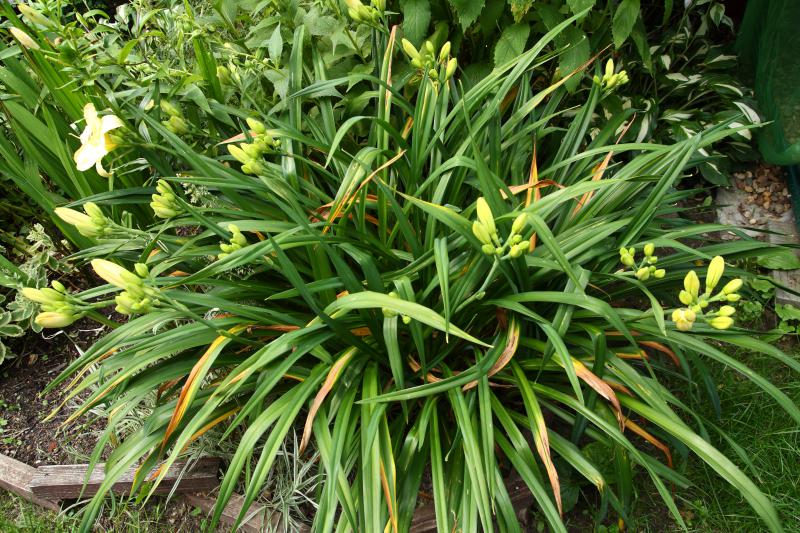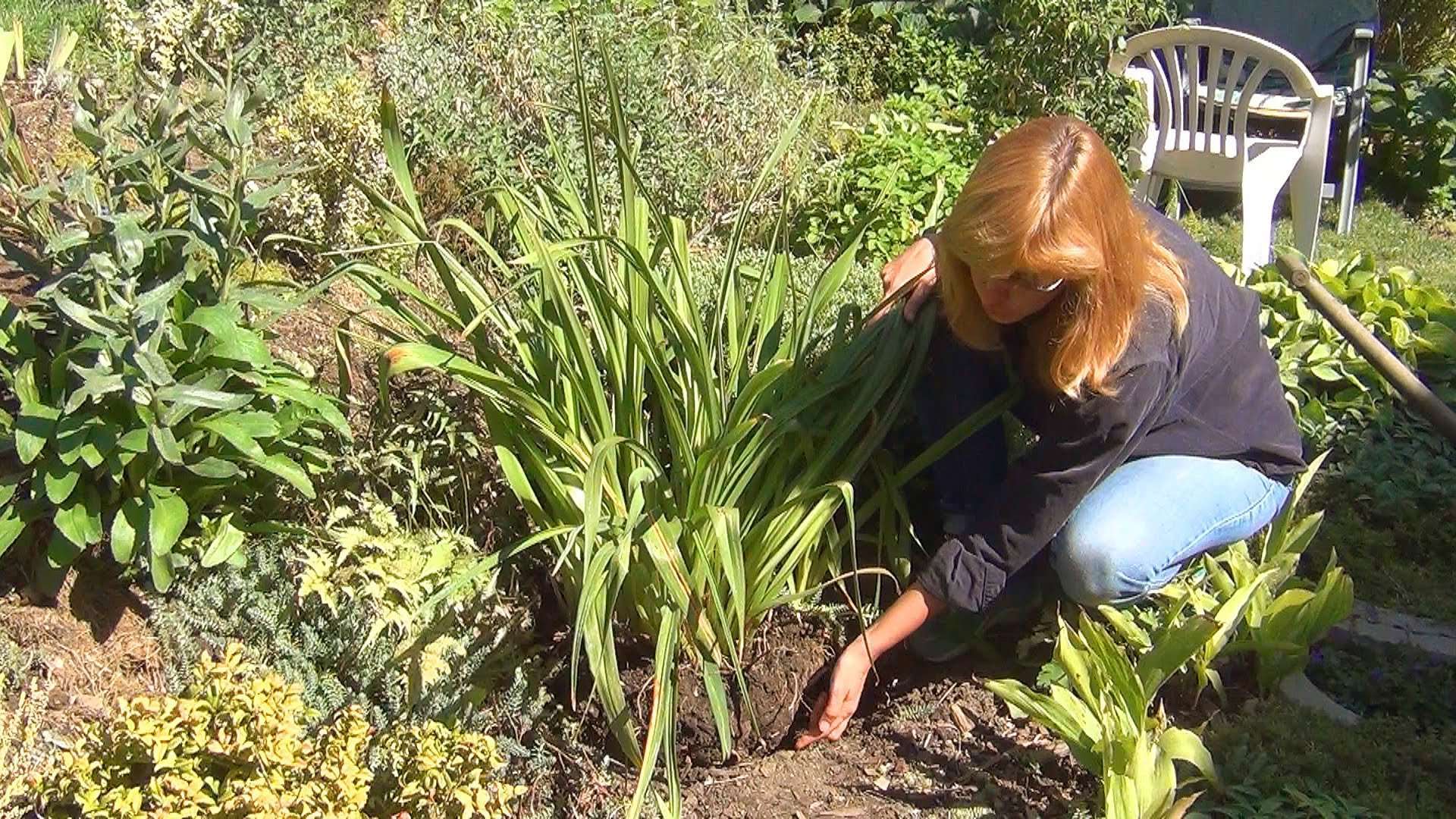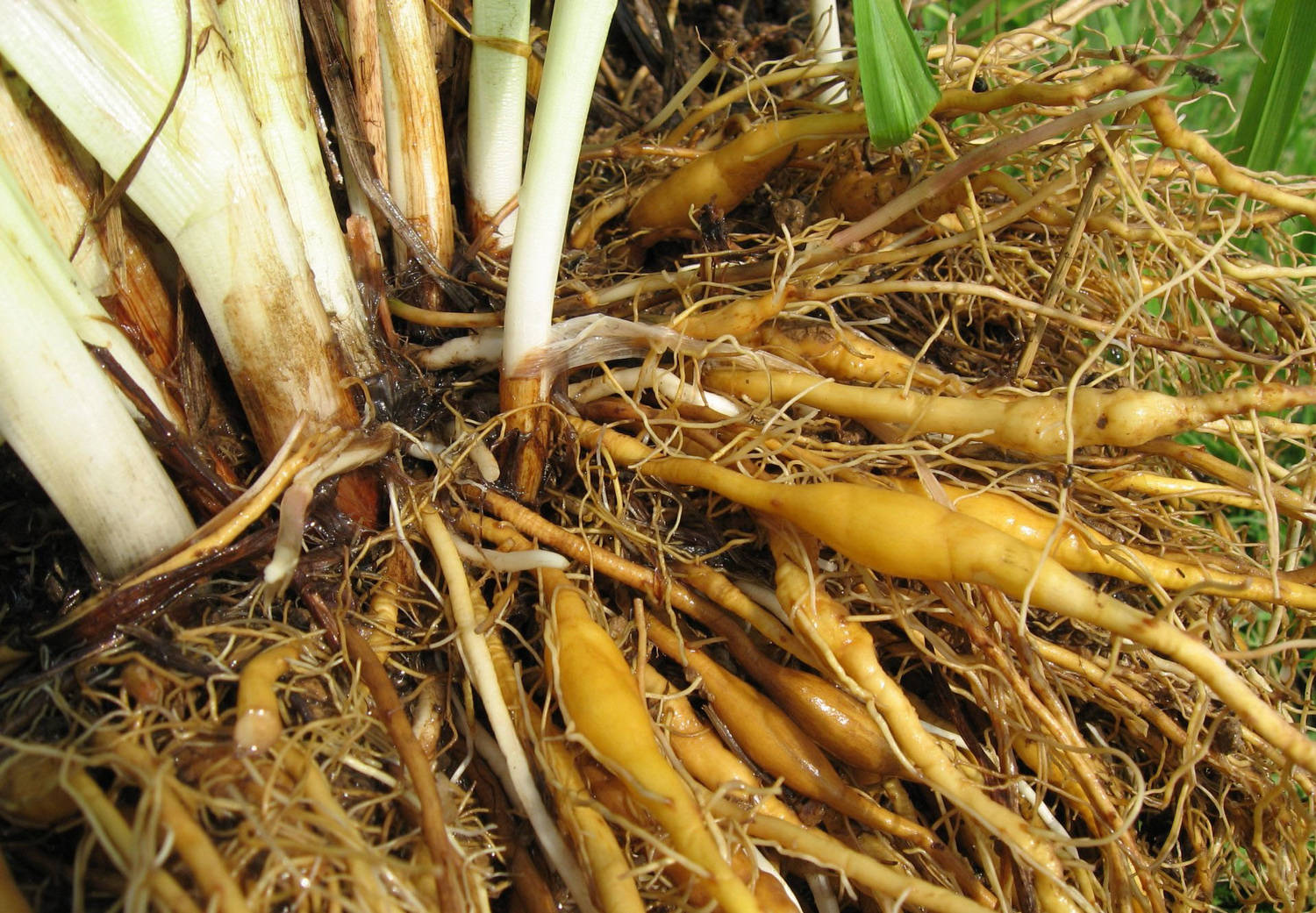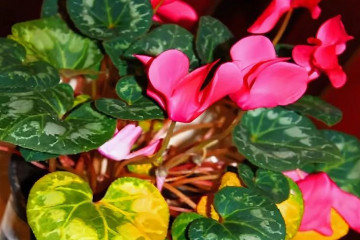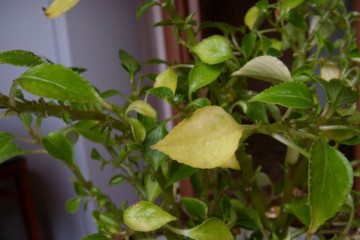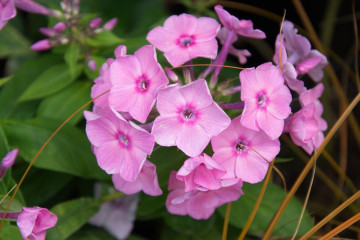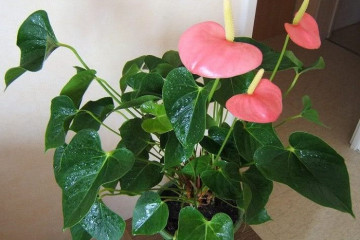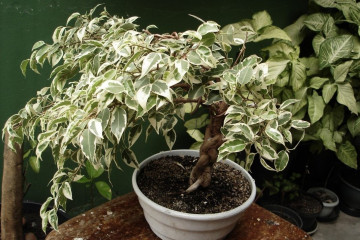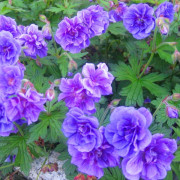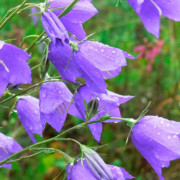Why do the leaves of the daylily turn yellow - what to do
Content:
Daylily yellow is a perennial plant that is known not only in Russia, but also in many countries of the world. It can be grown not only by experienced gardeners, but also by anyone who wishes. Flowers can be used to decorate home gardens, parks and other public places. Sometimes the daylily turns yellow, the bush loses its attractiveness, stops blooming and dries up altogether. What to do in this situation?
How to identify the problem?
Daylily with yellow flowers appeared in Europe more than 300 years ago and the first officially registered flower was in England in 1892. Since then, breeders have been able to develop more than 80,000 new varieties.
Basically, daylilies are unpretentious and do not require careful maintenance. Only a few of the hybrids that have been bred by micropropagation are very moody. In order to avoid problems with shrubs, he needs to carefully select the composition of the soil, observe the temperature regime and the amount of watering. The seller, as a rule, informs about all these nuances in the description of the flower.
Daylily turns yellow what to do? The following rules should be observed:
- the landing site should be well lit;
- the soil is fertile, loose and with a neutral acidity level;
- watering must be carried out on heated in the sun or spring water;
- before the beginning of the growing season, the plant is fed with nitrogen fertilizing, during flowering - with potassium-phosphorus-nitrogen, and after the end of flowering - with potassium-phosphorus.
To maintain the beauty of the daylily, you need to ensure that pests do not settle on the shrubs, and the roots do not rot from abundant watering.
Excess or lack of moisture
Many gardeners are faced with the question: why do the leaves of the daylily turn yellow and what to do in this case? Often this trouble arises due to an excess of moisture and in order to avoid this, first of all, it is necessary to determine the place of planting of the plant. The main thing is that it should be planted in an area where the water level is below 1 meter, because the roots of the shrub can penetrate to a depth of 50 cm.
It is necessary to water the daylily only when it is clear that the ground around it is dry. If the soil is slightly loosened, it is noticeable that it is dry more than 3 cm deep - this is a signal for watering.
High humidity can also lead to yellowness of the leaves, especially when the air temperature drops to +18 ℃, which in turn provokes rotting of the root system. During periods of high humidity, slugs may also appear, which eat the leaves of the plant and damage the buds.
If there is not enough moisture, the tips of the leaves begin to dry out, because the roots cannot supply the required amount of liquid to the top of the plant. Cells gradually begin to lose moisture and the process of photosynthesis is inhibited.
Improper feeding
Why do the tips of the leaves turn yellow on the daylily? This can happen due to improper feeding. It is very important to feed it correctly in caring for a shrub, because further flowering will depend on this.The main thing is not to overdo it, because an excess of nitrogen fertilizer will lead to the fact that the bush will grow strongly, and this will negatively affect the number of peduncles and their size.
If the soil for planting shrubs is too clayey, then it is imperative to dilute it with sand, peat, and drainage materials. If the soil is acidic, it is worth making lime, if not, mineral fertilizer and ash will suffice.
A common cause of yellowing of the lower leaves of a daylily is a lack of magnesium, as a result of which the problem gradually spreads throughout the plant. Leaves become lethargic, brittle and necrotic areas will be visible.
Diseases
Daylily diseases are rare. Basically, daylily is a problem-free plant. It is only necessary to promptly remove inflorescences that have withered, because bacteria and various pests grow on them.
Rotting roots
In this case, the leaves begin to dry, an unpleasant odor appears, and the roots themselves, if dug out, become soft. When such symptoms appear, the plant must be dug up and held for 15 minutes in a solution of potassium permanganate, and then dried in the sun.
Plant streak
Fungus infection occurs. Leaves become striped and brown spots appear. The plant itself does not die, but the leaves begin to fall off. In this case, the bush must be treated with a 0.2% foundationol solution.
The appearance of rust
Blotches with yellow powder appear on the leaves. As a result, the leaves fall off and flowering stops.
Chlorosis
If the daylily has turned yellow, every gardener knows what to do in this case. Often this problem boils down to a lack of chlorophyll. Yellowness can appear in only one place, or spread throughout the foliage. As a result of the disease, the plant completely dies, but chlorosis should not be confused with the natural death of leaves.
Among the main causes of chlorosis are:
- the soil is oversaturated with lime with a lack of iron;
- violation of the nutrition of the root system;
- excess or lack of moisture;
- toxicity of herbicides.
Fusarium
Brown spots are noticeable on the stem of the plant, the upper leaves begin to blacken. Since the disease is detrimental to the plant, it does not respond to treatment and if a painful shrub is found, it must be immediately removed from the site.
Gray rot
It occurs most often in rainy weather, when there is an excess of moisture in the soil. The second reason is the presence of weeds near the daylily. Gray rot begins to manifest itself from the leaves, which are first covered with dark yellow spots, and then brown.
If a disease is detected, it is necessary to urgently start to deal with the problem by removing the affected leaves and treating the shrub with 1% Bordeaux liquid (or foundationol solution).
Rotten mold
It affects the daylily bulb, as a result, the leaf begins to turn yellow immediately. The main sign of the presence of the disease is the yellowing of the top of the bush and the gradual drying of the stem. In this case, all plants are removed from the site.
Pests
Before starting to treat the plant, it is necessary to identify the cause of the daylily disease and begin to combat them. A great danger to shrubs is posed by pests, among which onion mites, thrips, aphids, and mosquitoes are the most common.
To get rid of them, insecticides are used that enter their body while eating the leaves of the plant. Gardeners recommend using the means confidor, zenith, aktara, commander.
How to prevent yellowing and shrinkage
Why the leaves of the daylily turn yellow is understandable, but how to prevent the appearance of the problem? Everything is very simple here, the main thing is to regularly inspect the plant, monitor its appearance, feed it in time and carry out prevention in the spring during the growing season and flowering.
Daylilies decorate not only personal plots, but also parks, gardens and other places. If the plant begins to turn yellow profusely, this is the first alarm bell for taking measures to identify the cause of the problem and get rid of it.
